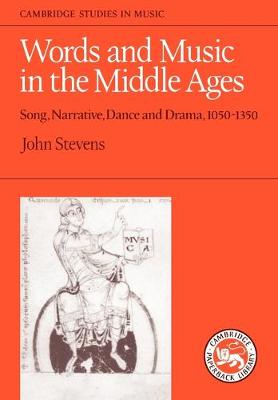Cambridge Studies in Music
2 total works
First published in 1962, John Stevens' book examines the complex interplay between lyrical and musical compositions in the courts of Henry VII and VIII. One of the persistent problems for the reader of an English lyric is this: was the poem meant to be sung? and if so, how did music affect the writing, and how should it affect our reading of the poem? Stevens aims to answer these questions by challenging the notion of a traditional union between music and verse. He examines late medieval ideas about music and poetry and the impact of the Reformation on them, and uses the social information about music and musicians to interpret the evidence of the early Tudor songbooks. This book is supplemented by four appendices containing the texts of all the poems in the three main Tudor songbooks together with information about musical settings and related poems, an index of selected songs, a list of sources, and a bibliography of relevant books and articles. It is hoped that this volume will appeal to practising musicians and scholars, as well as anyone for whom music is a continuing intellectual interest and a pleasure.
This book examines the relation of words and music in England and France during the three centuries following the Norman Conquest. The basic material of the study includes the chansons of the troubadours and trouveres and the varied Latin songs of the period. In addition to these 'lyric' forms, the author discusses the relations of music and poetry in dance-song, in narrative and in the ecclesiastical drama. Professor Stevens examines the ready-made, often unconscious, and misleading assumptions we bring to the study and performance of early music. In particular he affirms the importance of Number, in more than one sense, as a clue to the 'aesthetic' of the greater part of repertoire, to the relation of words and melody. and to the baffling problem of their rhythmic interpretation. This is the first wide-ranging study of words and music in this period in any language. It will be essential reading for scholars of the music and the literature of medieval Europe and will provide a basic and comprehensive introduction to the repertoire for students.

